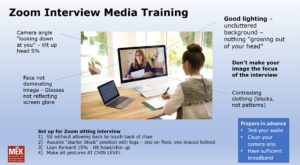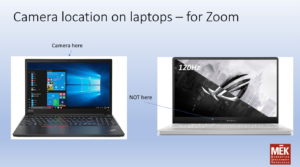Punch up your brand with online media relations
Positive media relations – the strategic placement of news and information about your company, product, or service – remains a powerhouse tactic for brand development. However, media relations now represents something quite different from just a few years ago.
 Today, there exist about seven public relations professionals for every active journalist. Space and time in newspapers – especially those with diminishing pages and schedules – typically represents far less placement opportunities than a decade ago.
Today, there exist about seven public relations professionals for every active journalist. Space and time in newspapers – especially those with diminishing pages and schedules – typically represents far less placement opportunities than a decade ago.
Getting your story in the news is competitive, now more than ever.
The good news? Great stories, great content – information that attracts, educates, and entertains – still wins.
But, one may ask, why is public relations and media relations still important today?
- Media placement/coverage of stories about your event, initiative, goal represents a 3rd party endorsement (these news “endorsements” validate marketing messages and product/service claims)
- Media coverage is generally more credible than advertising (and makes advertising work harder with higher impact)
- Media coverage has no space cost – but its EARNED (not free) media
- Media coverage defines and validates a company/organization’s value proposition
- Because of its credible nature, media relations is critical to effective brand building (brand is not a logo, it exists between one’s ears)
- Media story placement often accelerates sales
- You ARE the brand in media relations
- Online searchable KEY WORDS elevate your brand in media coverage
I recently delivered a popular online webinar for the Indiana Economic Development Association. I reminded the economic development professionals of some key facts in dealing with the media. They are:
- Formal press releases typically only have value when they deal with real news
- Content is something that readers, listeners or viewers of your target media would look for/seek out
- Don’t fall prey to “Self-referenced criteria,” which represents a fallacy: “I like it/find it important, therefore everybody likes it or finds it important”
- News criteria for economic development
- Less philosophy, more quotable rationale
- Focus on data points: investment numbers, jobs created, workers attracted, estimated economic impact
- PERSONALIZE – do your upfront research – DON’T “BLAST E-MAIL”
The above essentially applies to everyone. Key points? Be relevant. Will the viewers or readers of the media you’re dealing with be interested in what you have to say?
Start with the end in mind
While press releases have different functions than they may have had previously (for example, an online press release in your company’s news page documents the history and achievements of your company, which is very important), they still can serve a critical function. We at MEK typically put together media briefs or fact sheets that highlight why our client’s information or news might be of interest to a reporter’s viewers or readers (both traditional and online).
An important part of successful media relations is to know what your reporter, editor or producer is interested in. Sometimes a client will want to profile something that is important to them, but probably has little or no interest to anyone outside the company (unless they’re a direct competitor or detractor). Our challenge then becomes how to translate the corporate “news” into a form that will be attractive to media.
To be successful at this, we follow key reporters and read/view what they cover. We also track reporter Twitter accounts, as these give remarkable insight to what a reporter may be personally interested in.
Pitching the story
So, when your putting your story together (whether for online or traditional media), consider the following points:
- How are you going to tell your story?
- Three questions: “So what? Who cares? What’s in for me?”
- The news pyramid is alive & well – who, what, where, when, why
- Is this the right time to tell your story?
- Do you have an existing relationship with the reporter/news director/assignment editor? Does he/she know who YOU are? (reputation management) Reporters prefer texts – will give you their cell phone #
- Think critically – just how interesting is your story really? (want a news outlet to cover your ground-breaking or ribbon-cutting? Load up your brief with facts and captivating visuals)
A key point? Most reporters today want media briefs and e-mails sent by email. That means your subject line becomes ALL-IMPORTANT. It also means that your email better come from YOU and not info@yourcompany.com, which is a near-instant turn-off.
So, if the title of this blog is about online media relations, why am I talking about traditional media pitches so much?
The reason is that the success principles translate to both sides. But there are many important considerations in this day and age about online media relationships. A critical one is the ZOOM interview.
You’ve seen them. Some people look great on ZOOM. Others look like they just woke up.
What are some critical things to consider? Here’s a few:

Make sure that the camera angle is “looking down at you” – tilt your head up 5%
Prepare physically in advance – test your audio before the interview, clean your camera lens and make sure you have sufficient high-capacity and high-speed broadband (otherwise you can have video stuttering)
Unless you want to end up on the humorous Room Rater Twitter page (of less than stellar backgrounds), make certain that your ZOOM (or Teamwork) background looks attractive (don’t have a cluttered background or something “growing out of your head”)
There’s lots more (and we’ll be happy to talk this over with you – just contact us), but a few words about maximizing your impact:
- Always include corporate hyperlinks with releases, work for link inclusion (videos, text, content) back to your website (SEO accelerator)
- Post all releases (with key words, photos – with alt text) on your company website
- When coverage appears, hyperlink stories in corporate blog posts, post on social media – corporate Facebook, LinkedIn pages (use hash tags where possible)
- Send releases to area chambers (Indiana Chamber has a force-multiplying online press release option—also provides easy backlink)
Yes, this is a long blog. But that’s because there’s much to relate. If you’d like a copy of the media relations presentation I made to the Indiana Economic Development Association, just let me know here. Likewise if you’d just like to talk about other strategic elements of brand building through public relations.
You can be successful in media relations – fortuna favet fortibus!
By Michael Snyder, MEK.
